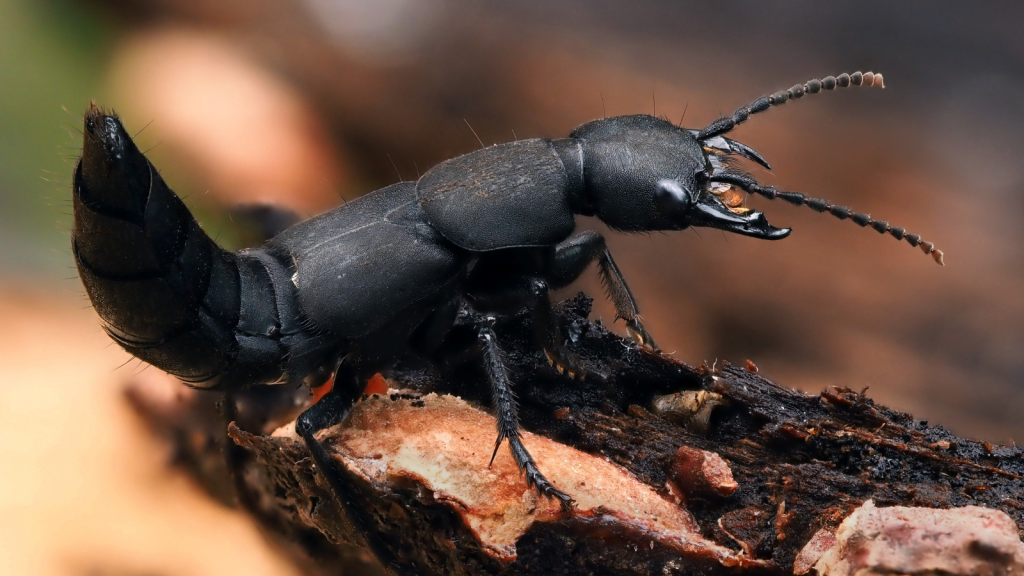The Devil’s Coach Horse beetle is a fascinating creature that’s often misunderstood. This small but mighty insect has been the subject of folklore and superstition for centuries, earning its devilish name from its defensive posture. Found throughout the UK, these beetles are more than just garden curiosities. They’re skilled hunters, important decomposers, and have some truly unique behaviours. Although I have to admit I’d rather they didn’t keep making their way into my house, as they can deliver a painful bite if provoked.
Not Actually a Beetle
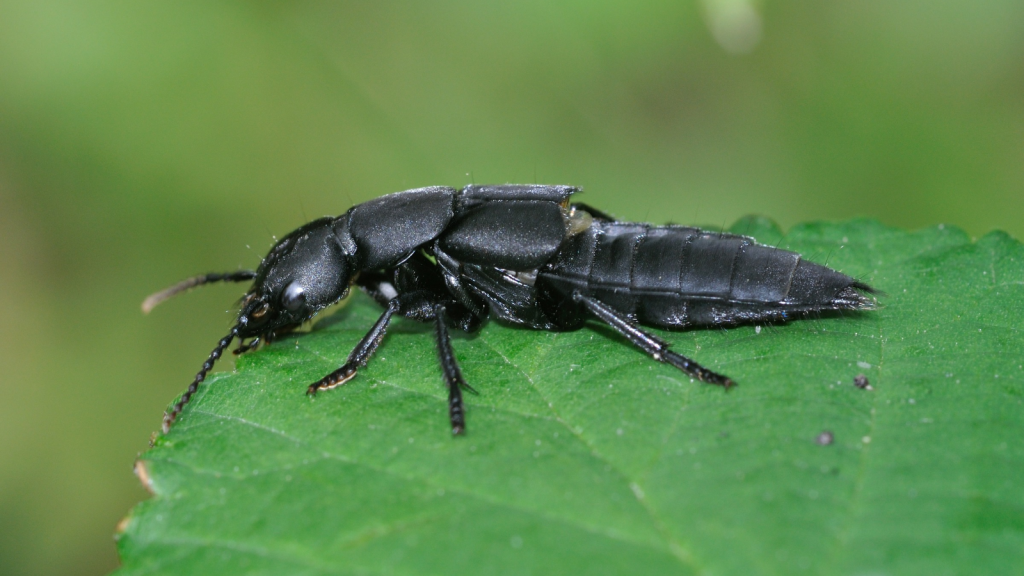
Surprisingly, the Devil’s Coach Horse isn’t a true beetle at all. It belongs to the rove beetle family, Staphylinidae. These insects have shorter wing covers than most beetles, exposing much of their abdomen. This gives them a more elongated, earwig-like appearance. Their scientific name, Ocypus olens, reflects their quick movement and strong odour.
Defensive Scorpion Pose
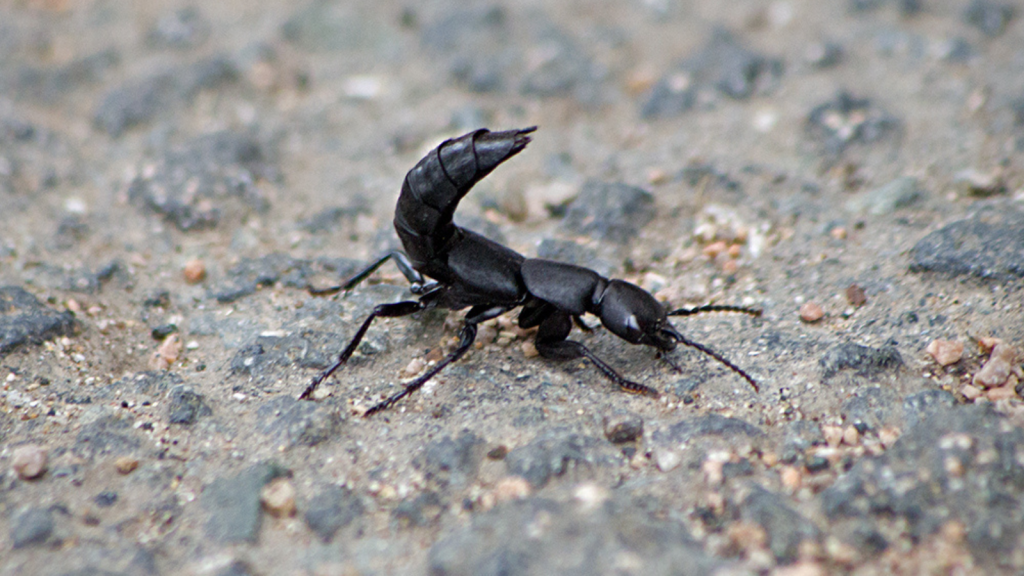
When threatened, this beetle raises its abdomen in a scorpion-like manner. This posture is purely for show – it can’t sting like a scorpion. However, the display is often enough to deter potential predators. The raised abdomen also positions its scent glands for more effective chemical defence if needed.
Potent Chemical Defence
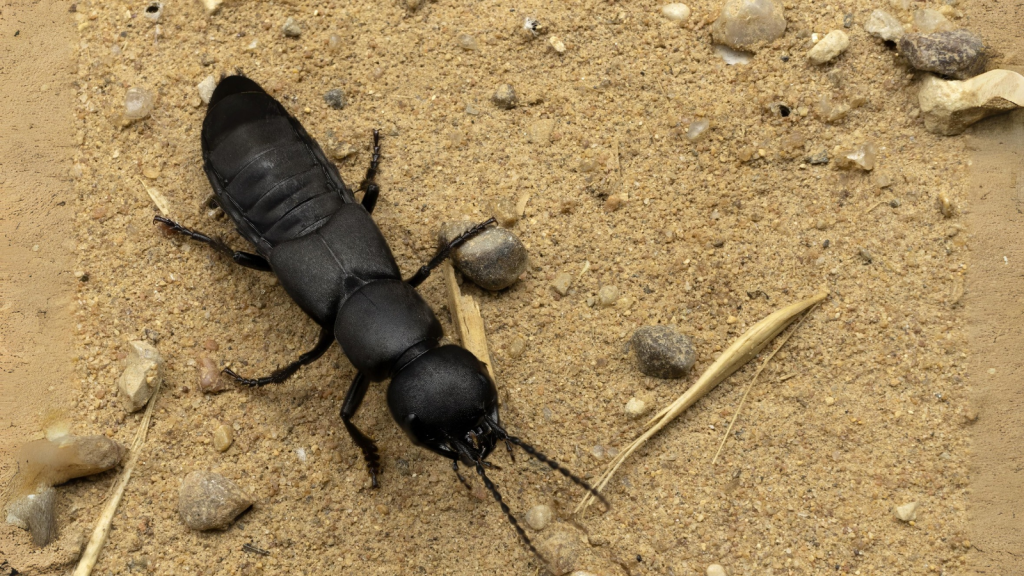
If the scorpion pose fails to ward off threats, the Devil’s Coach Horse has another trick up its sleeve. It can release a foul-smelling substance from glands at the tip of its abdomen. This odour is deeply unpleasant to predators and can cause irritation. The chemical cocktail includes compounds like iridodials and actinidine, which are similar to those found in cat urine.
Nocturnal Hunters
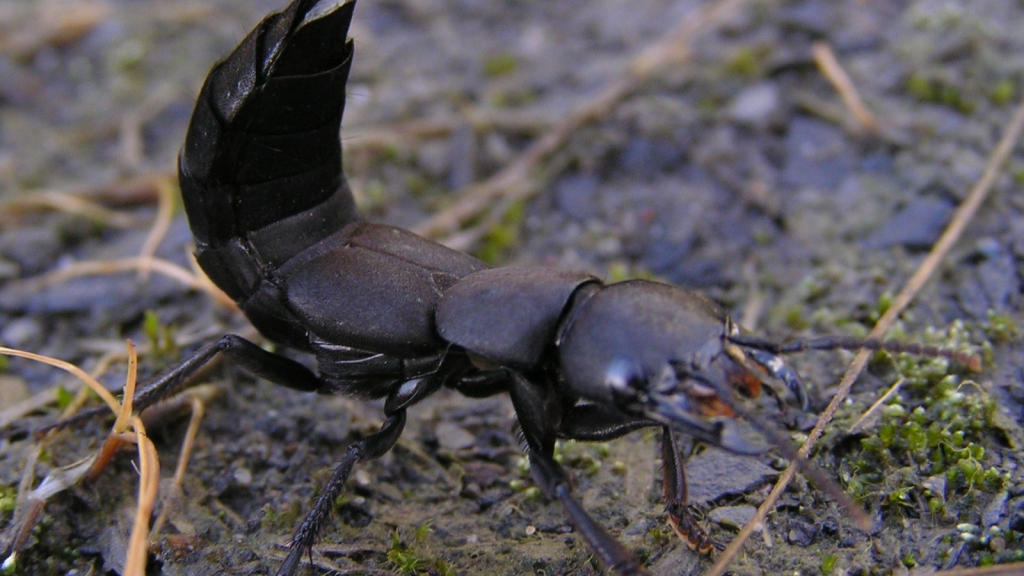
These beetles are primarily active at night. They emerge from their daytime hiding spots to hunt for small insects and other invertebrates. Their strong jaws make quick work of their prey. They’re particularly fond of slugs and snails, making them valuable allies in vegetable gardens.
Cannibalistic Tendencies

In times of food scarcity, Devil’s Coach Horse beetles aren’t above eating their own kind. This cannibalistic behaviour ensures their survival in harsh conditions. They’ve even been observed eating their own larvae if other food sources are scarce. This adaptability is one reason for their widespread success across various habitats.
Lengthy Lifespan
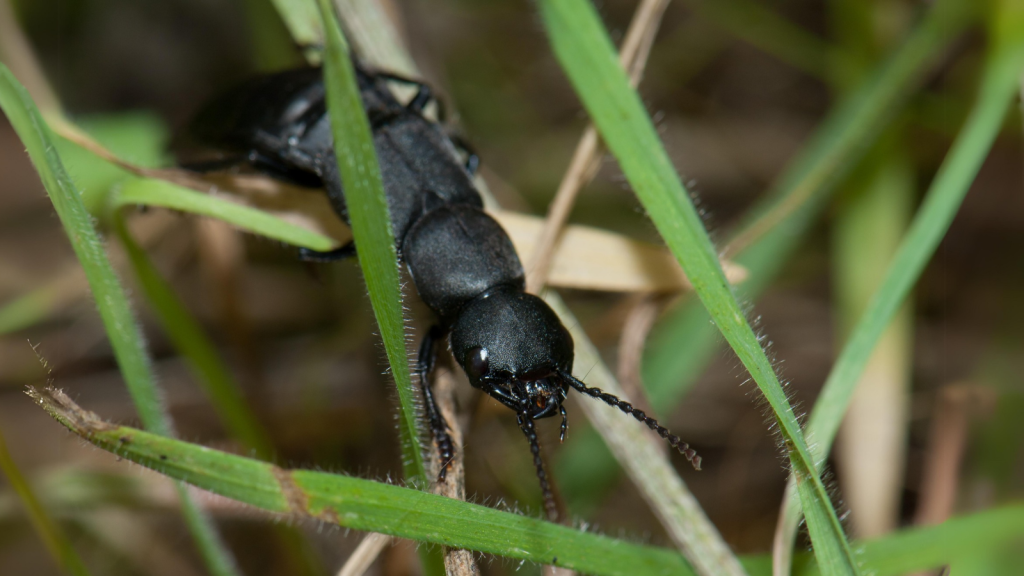
For an insect, the Devil’s Coach Horse has a remarkably long life. They can live for up to three years in the wild. This longevity allows them to have multiple breeding seasons, contributing to their widespread presence in British gardens. Their long lifespan also means they can become familiar residents in gardens, returning to the same hunting grounds night after night.
Excellent Flyers
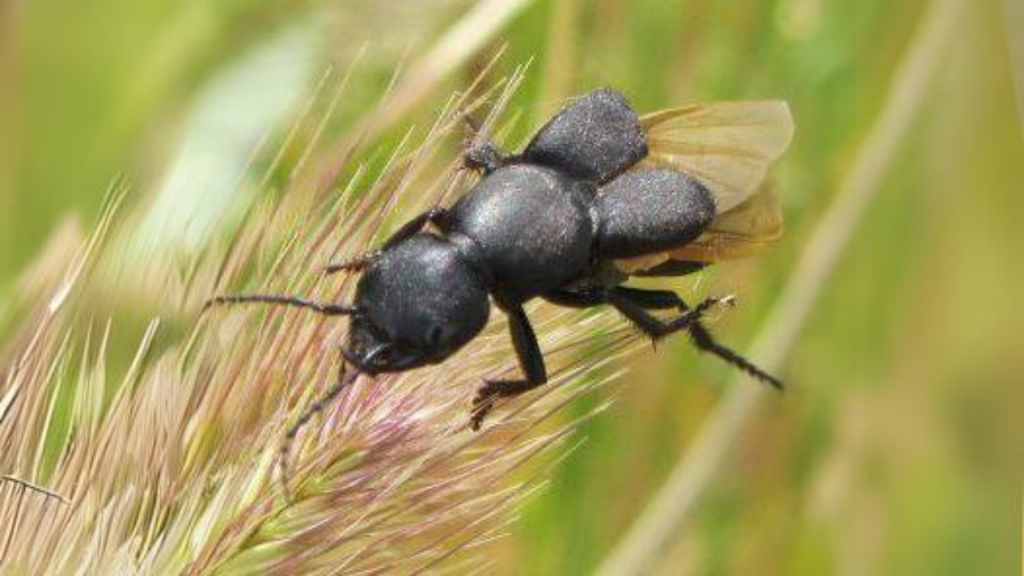
Despite their short wing covers, these beetles are capable flyers. Their wings are usually folded under the short elytra (wing covers). When needed, they can unfurl these wings and take to the air, often to find new hunting grounds or mates. Their flight is typically short and clumsy, but effective for local dispersal.
Winter Survivors
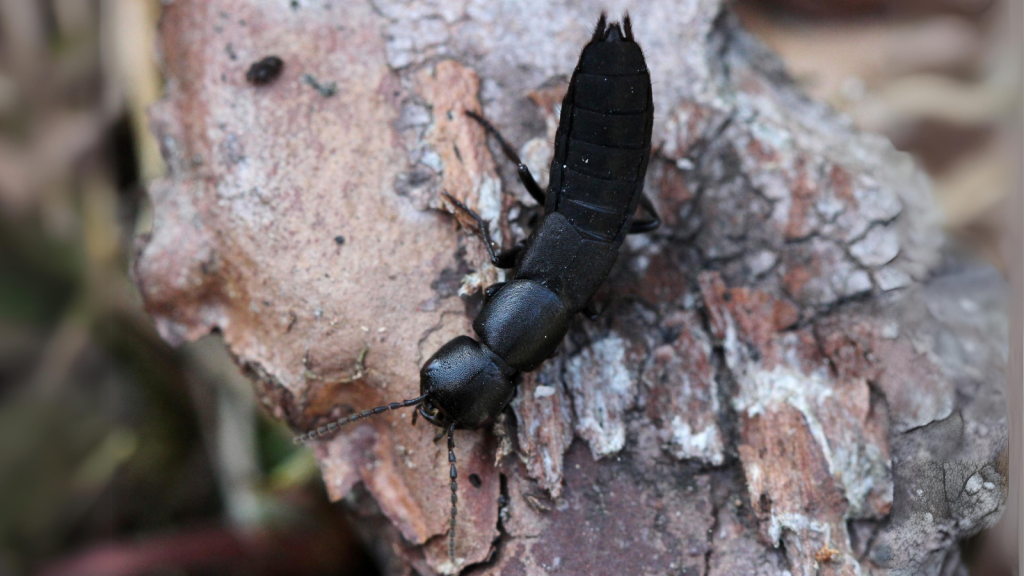
Unlike many insects, Devil’s Coach Horse beetles don’t die off in winter. They survive the cold months by seeking shelter in compost heaps, under bark, or in leaf litter. This ability to overwinter as adults contributes to their success as a species. During particularly mild winters, they may even remain active, continuing to hunt and control pest populations.
Beneficial Garden Allies
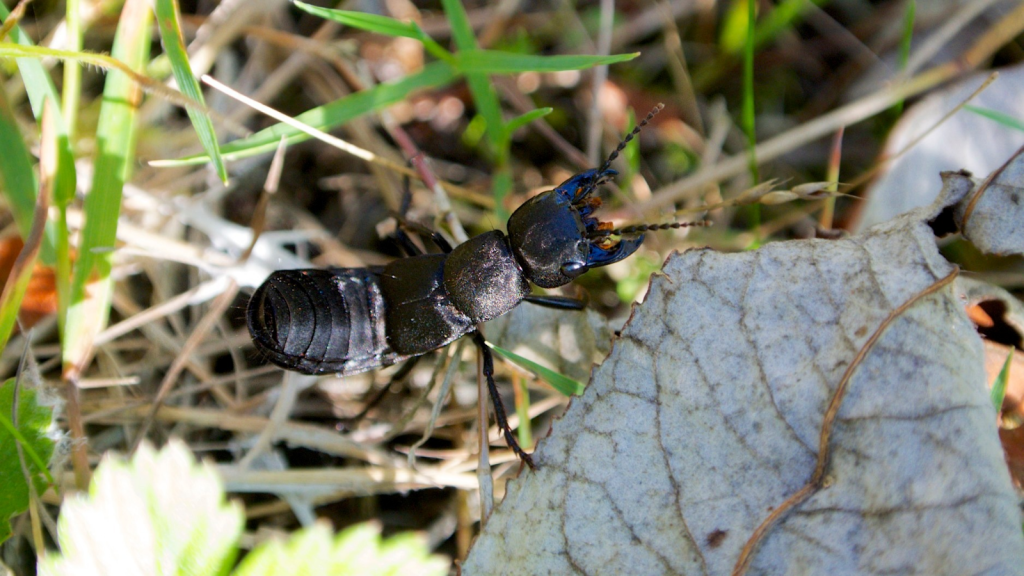
Gardeners should welcome these beetles. They feed on many common garden pests, including slugs and aphids. Their presence can help maintain a natural balance in your garden ecosystem. A single Devil’s Coach Horse can consume up to 75 slugs in a single season, making them highly effective natural pest controllers.
Ancient British Residents
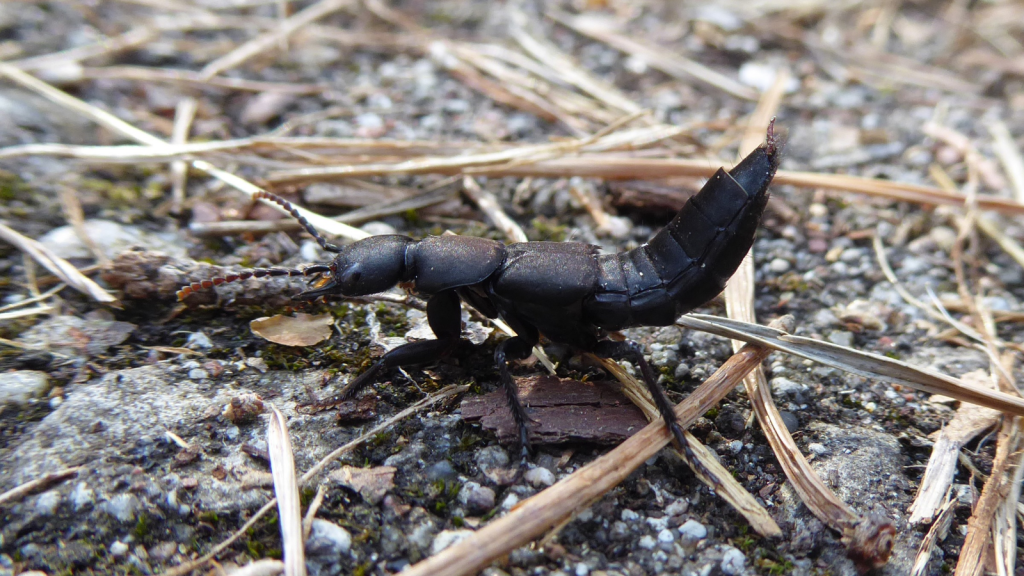
These beetles have been in Britain for a very long time. Fossil evidence suggests they’ve been scuttling around the British Isles since at least the last ice age, over 11,000 years ago. Their resilience and adaptability have allowed them to survive dramatic climate changes over millennia.
Speedy Runners
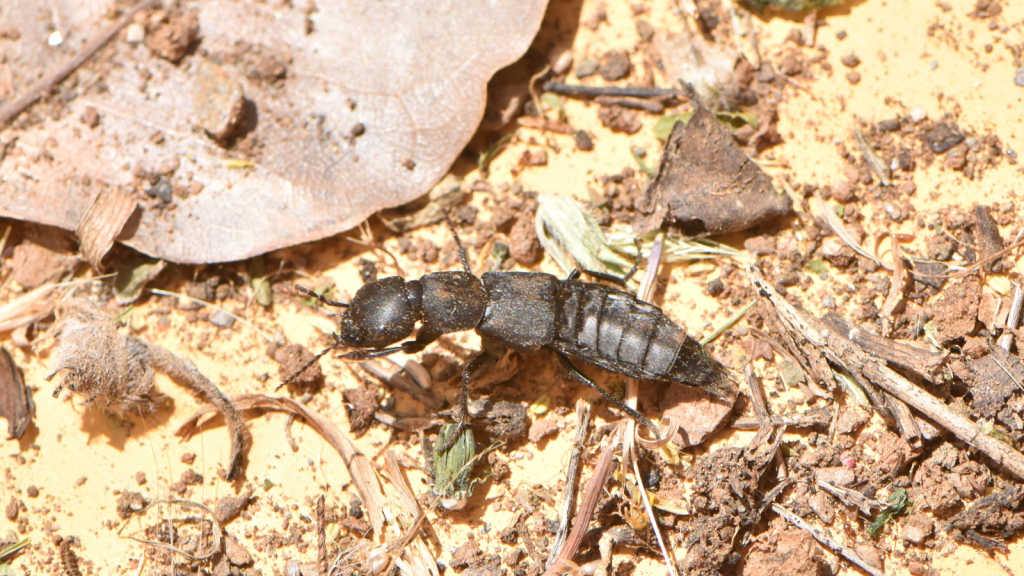
Devil’s Coach Horse beetles are quick on their feet. Their long legs allow them to sprint across garden soil at impressive speeds. This agility helps them catch prey and escape from potential predators. They can run at speeds of up to 20 body lengths per second, which is equivalent to a human running at about 70 mph.
Parental Care
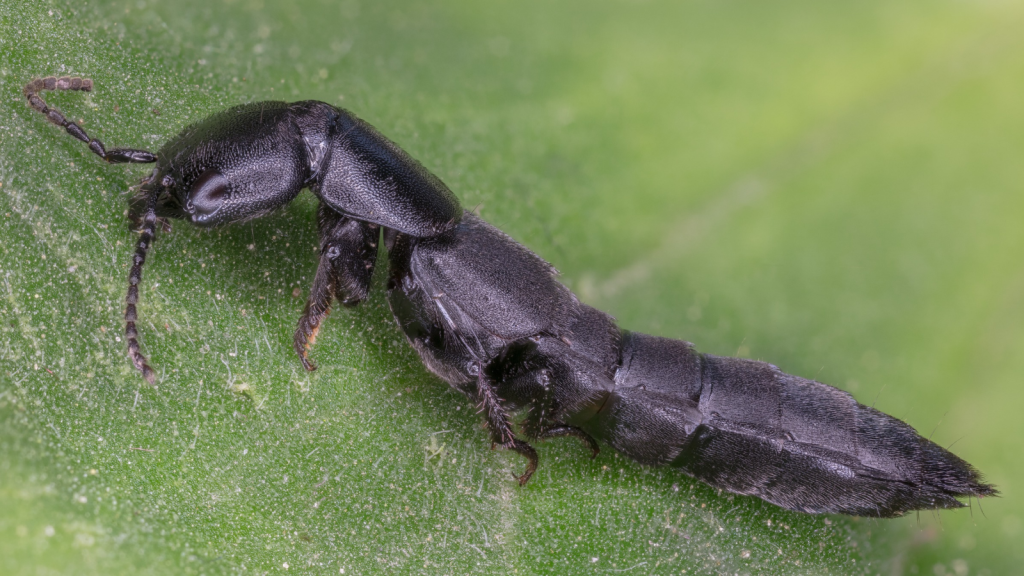
Female Devil’s Coach Horse beetles show a degree of parental care, which is unusual among insects. After laying eggs, the female will often stay nearby to guard them from predators. This behaviour increases the survival rate of their offspring. The female may even clean the eggs to prevent fungal growth, demonstrating a level of care rarely seen in the insect world.
UV Light Attraction
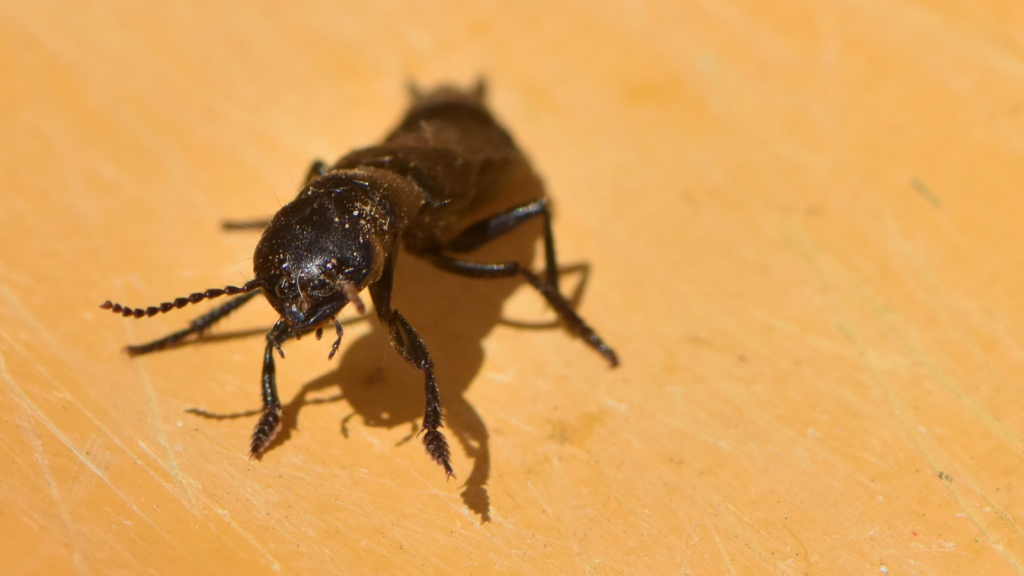
Like many nocturnal insects, these beetles are attracted to UV light. This behaviour can sometimes bring them into conflict with humans when they’re drawn to lit windows or porch lights at night. Their attraction to light can be used by entomologists to study their populations and behaviour patterns.
Diverse Habitats
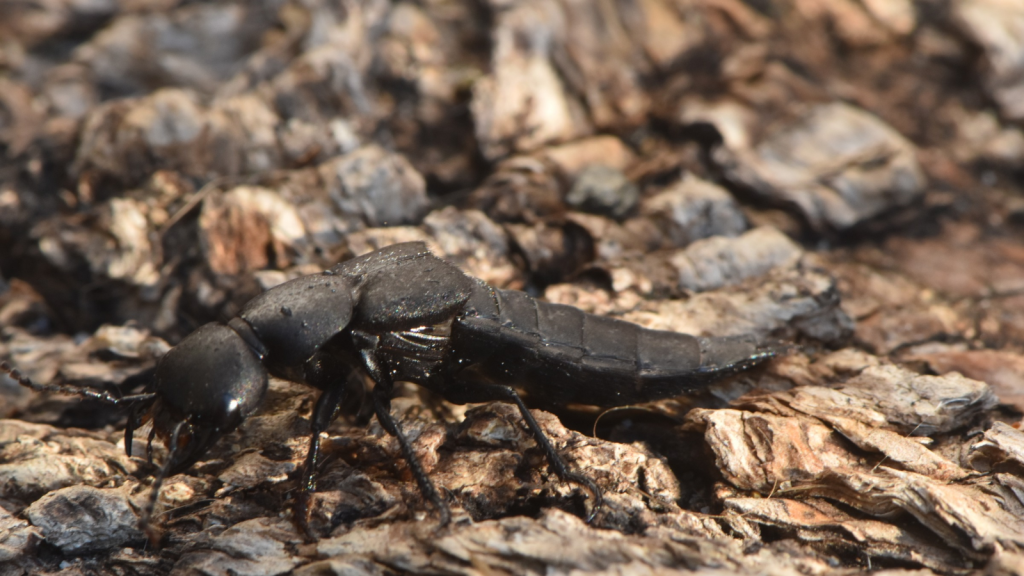
While commonly found in gardens, Devil’s Coach Horse beetles are adaptable creatures. They can thrive in a variety of habitats, from woodland floors to urban parks. They’ve even been known to make homes in old buildings. This adaptability has allowed them to maintain stable populations despite increasing urbanisation.
Name Origins
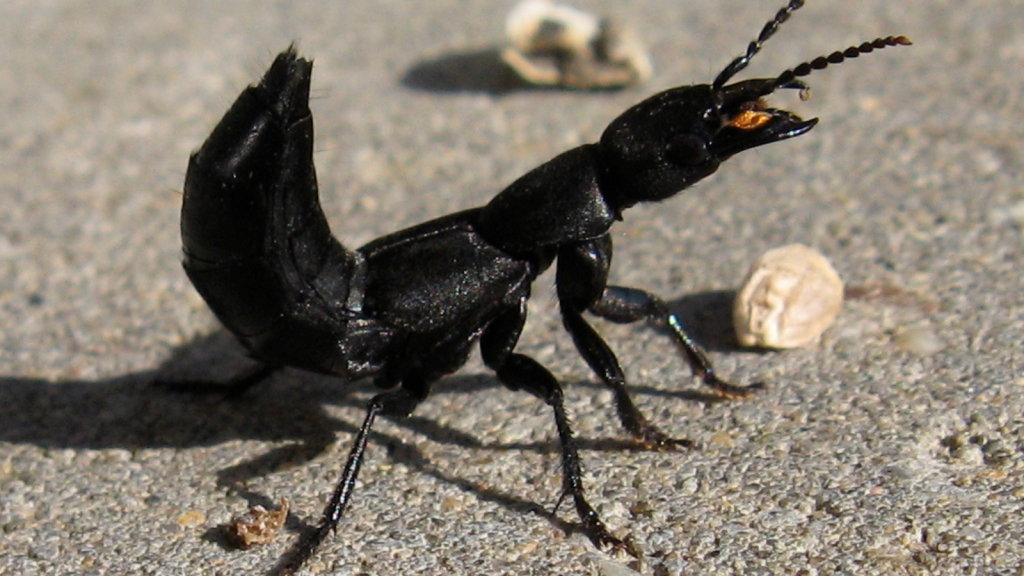
The beetle’s unusual name has roots in folklore. Its defensive posture was thought to resemble a horse rearing up, while its black colour and fearsome appearance led to associations with the devil. The ‘coach’ part likely refers to the old belief that these beetles pulled the devil’s carriage. In some parts of Britain, they’re also known as ‘devil’s footman’ or ‘coffin-cutter’, reflecting their long-standing place in local superstitions.

